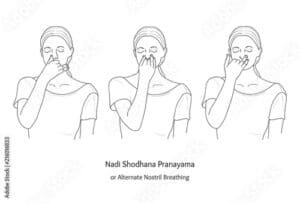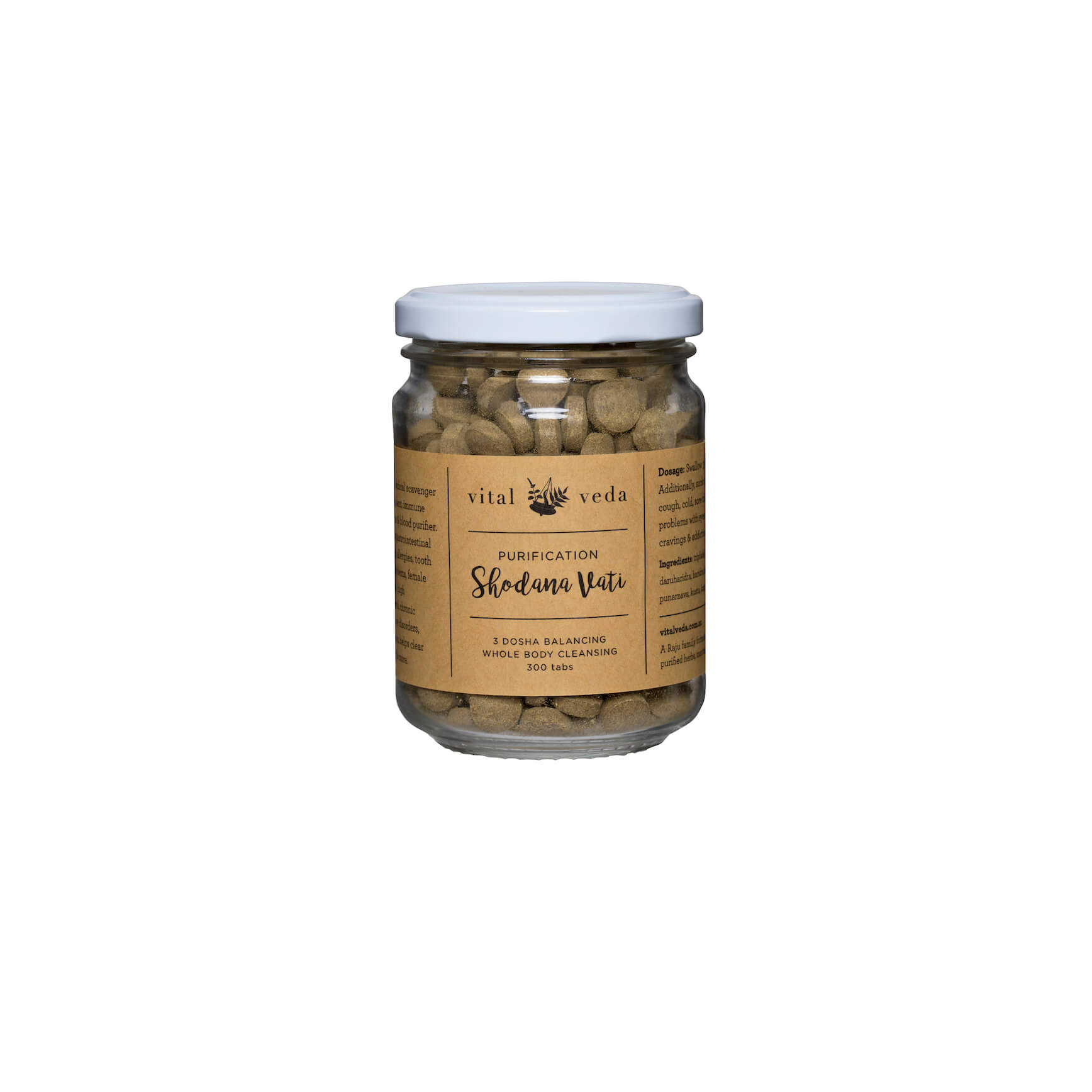The name for Asthma in Ayurveda sounds just like someone finding it difficult to breath – “Śvāsa” श्वास , pronounced “Shvaa-sa”.
Śvāsa is closely related to other respiratory ailments that are also exemplars of Sanskrit’s unique expression of naming a word based on the sound that which it is describing (onomatopoeia). Namely, these other two ailments are hiccup (“hikkā”) and cough (“kasa”).
Ayurveda’s detailed understanding of the pathology and treatment of Śvāsa goes beyond just asthma, but also dyspnoea (difficult or laboured breathing).
THE SERIOUSNESS OF ASTHMA
There are five main types of asthma in Ayurveda.
According to Ayurveda, asthma, dyspnoea and hiccup are actually very serious diseases that can be deadly, thus need to be attended to at all stages with great care.
“If these are not properly treated at the appropriate time or if the patient indulges in unwholesome regimens, these diseases being exacerbated become fatal like the deadly snake-venom.”
~ Caraka Samhita, Chikitsa Sthana, Ch 17, 8-9
But do not fear!
These diseases are classified into various varieties, which range from mild to serious.
For example, you would be familiar with the odd and harmless hiccup, but there are people who have painful hiccups that wake them up throughout the night every hour, everynight, which can get very serious.
Furthermore, Ayurveda has an extensive treatment protocol for these respiratory ailments.
Taking action on your health, especially with a preventative approach, is key.
Let’s start with understanding the root causes of asthma.
CAUSATIVE FACTORS (HETU) FOR ASTHMA
Causative factors that aggravate vāta dosha then specifically may lead to asthma
-
Exposure to dust, smoke, environmental pollutants or wind;
-
Residing in cold places and use of cold water for bathing and drinking;
-
Exercise, sex and walking beyond one’s capacity;
-
Habitual intake of drying foods, e.g. organic crisps, organic corn chips, chickpeas, millet, caffeine.
-
Intake of food in deficient or excessive quantities,
-
Eating meals at irregular times,
-
Vitiation by āma (undigested food products).
-
Constipation associated with flatulence (ānāha);
-
Dryness of the body, (e.g. from electro-magnetic fields, lack of oil application, residing in air-conditioning etc.);
-
Fasting in excess;
-
Weakness and injury to vital points of the body (marmas);
-
Incompatible food combinations (Viruddha Ahara);
-
Excessive “cleansing “procedures (shodana cikitsa);
-
As a consequence of diarrhoea, fever, vomiting, coryza, phthisis, consumption, hyper-acidity, upward movement of vata (udāvarta), cholera, alasaka (intestinal torpor), pāndu (anaemia) and poisoning. (1)
Causative factors that aggravate kapha then specifically may lead to asthma
-
Habitual day-time sleeping (nispāva)
-
Excessive sesame oil in the diet;
-
Heavy food;
-
Excessive intake of fish and meat;
-
Intake of yoghurt and unboiled milk;
-
Intake of kapha-aggravating ingredients (heavy, cold, unctuous or greasy food)
-
Injury to the throat and chest;
-
Different types of obstruction to the channels (srotas). (1)
Causative factors that aggravate kapha then specifically may lead to asthma
-
Habitual day-time sleeping (nispāva)
-
Excessive sesame oil in the diet;
-
Heavy food;
-
Excessive intake of fish and meat;
-
Intake of yoghurt and unboiled milk;
-
Intake of kapha-aggravating ingredients (heavy, cold, unctuous or greasy food)
-
Injury to the throat and chest;
-
Different types of obstruction to the channels (srotas).
PATHOLOGY OF ASTHMA
Let’s understand what is (generally) going on:
-
Vāyu (air) located the chest after afflicting the channels carrying life-force or prana (prānavaha srotas) gets aggravated.
-
This aggravated vata means biological systems, including respiration, are moving in an agitated and aggravated way.
-
This stimulates kapha.
-
Now we have a complex situation of vata, predominantly associated with kapha, (complex because these doshas/biological elements are both opposites) are obstructing the respiratory and water channel (pranavaha and udaka-vaha srotras),
-
Due to this obstruction, these vitiated doshas re-route off course to circulate all over the body,
-
This aggravated vāyu being obstructed itself (in the circulatory course), causes śvāsa.
-
This leads to asthma (śvasa) and hiccup (hikkā). (2)
Sāmānya-Samprapti (General Pathogenesis) of Hikkā and Śvāsa:
1. They both originate from the upper site of pitta sthana (āmāśaya or stomach), (this does not mean pitta is involved)
2. These disease are caused by the simultaneous aggravation of kapha and vāyu.
3. They adversely affect the hrdaya (heart) and all the sapta dhatus (seven main biological tissues).
5 Types of Asthma
There are 5 types of asthma, according to the classical treatise Caraka Samhita:
-
Mahā-Śvāsa – great respiratory difficulty leaving one feeling intoxicated
-
Ūrdhva-Śvāsa – prolonged expiration and inability to have inspiration
-
Chinna-Śvāsa – affliction of prana-vata-srota (respiratory channels) with great distress. Deadly type of asthma.
-
Tamaka-Śvāsa – vāyu (air) moving in the reverse order pervades the prana-vaha-srota, afflicts the neck and head, and stimulates the phlegm to cause rhinitis. Difficult to lie down. Lungs are weak. This includes two types of śvāsa called Pratamaka and Santamaka Śvāsa
-
Ksudra-Śvāsa – vāyu mildly aggravated in the GIT leading to mild dyspnoea.
Pre-Symptoms of Asthma (Purva-Rupa of Śvāsa)
1. Constipation with flatulence;
2. Pain in the sides of the chest;
3. Pain in the cardiac region;
4. Reversion (vilomatva) of the respiratory functions (prana). (3)
TREATMENT (CIKITSA)
Foods to Include in Your Diet
1. In general, ingredients which reduce vata and kapha, which are heating (usna virya), and which cause downward motion of vata (vātānulomana).
2. Pippali (long pepper / piper long), good fried with ghee and added to food as a spice
3. Ginger
4. Black pepper
5. Mung beans
6. Moringa leaves – can use as a leafy green. Can used dried if fresh is not available.
7. Neem leaves – can add a little bit with mung dahl. Use dried leaves if fresh not available.
8. Old rice, old wheat or old barley (old grains do not increase kapha as much as new).
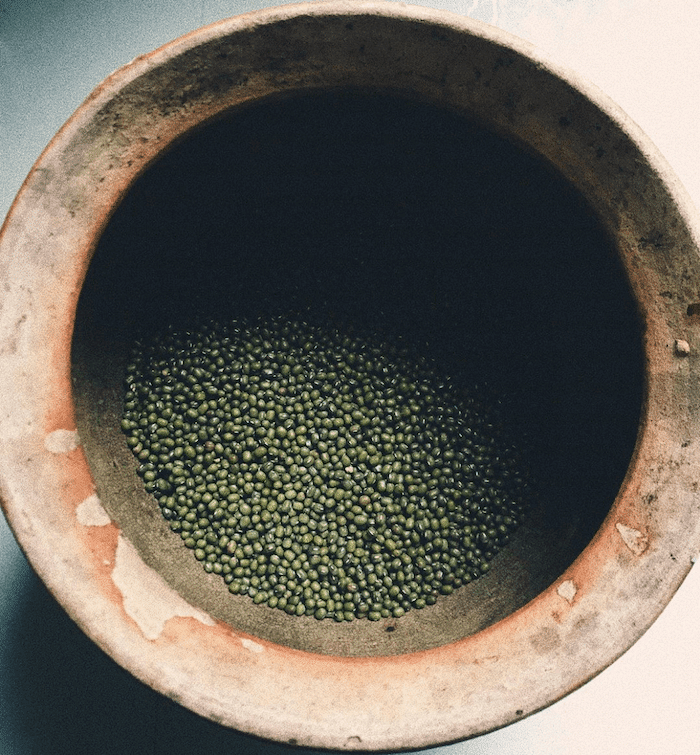
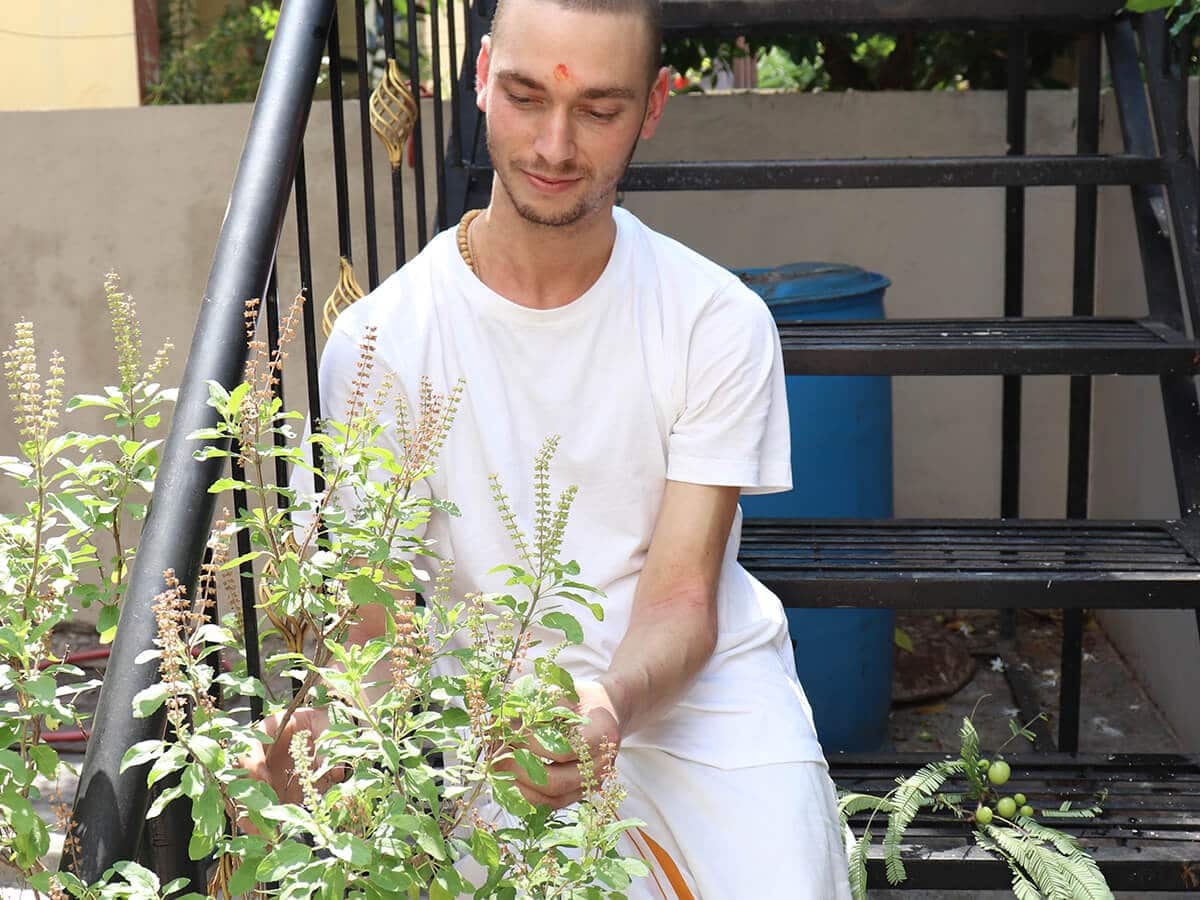
Tulsi
Tulsi is known as the “Queen of Herbs” in Ayurveda. It is very effecting for regulating Prana and respiration in the body.
Drink tulsi tea with fresh tulsi leaves or quality tulsi tea bags 1-2x/day.
To read more about the wonderful healing power & benefits of tulsi click HERE.
Foods to Avoid
-
Cold foods and drink – e.g. cold water or cold milk.
-
Yoghurt and cheese
-
Cold fruits, such as fruit straight out the fridge.
-
Pumpkin without spices.
-
Bread and pasta in excess.
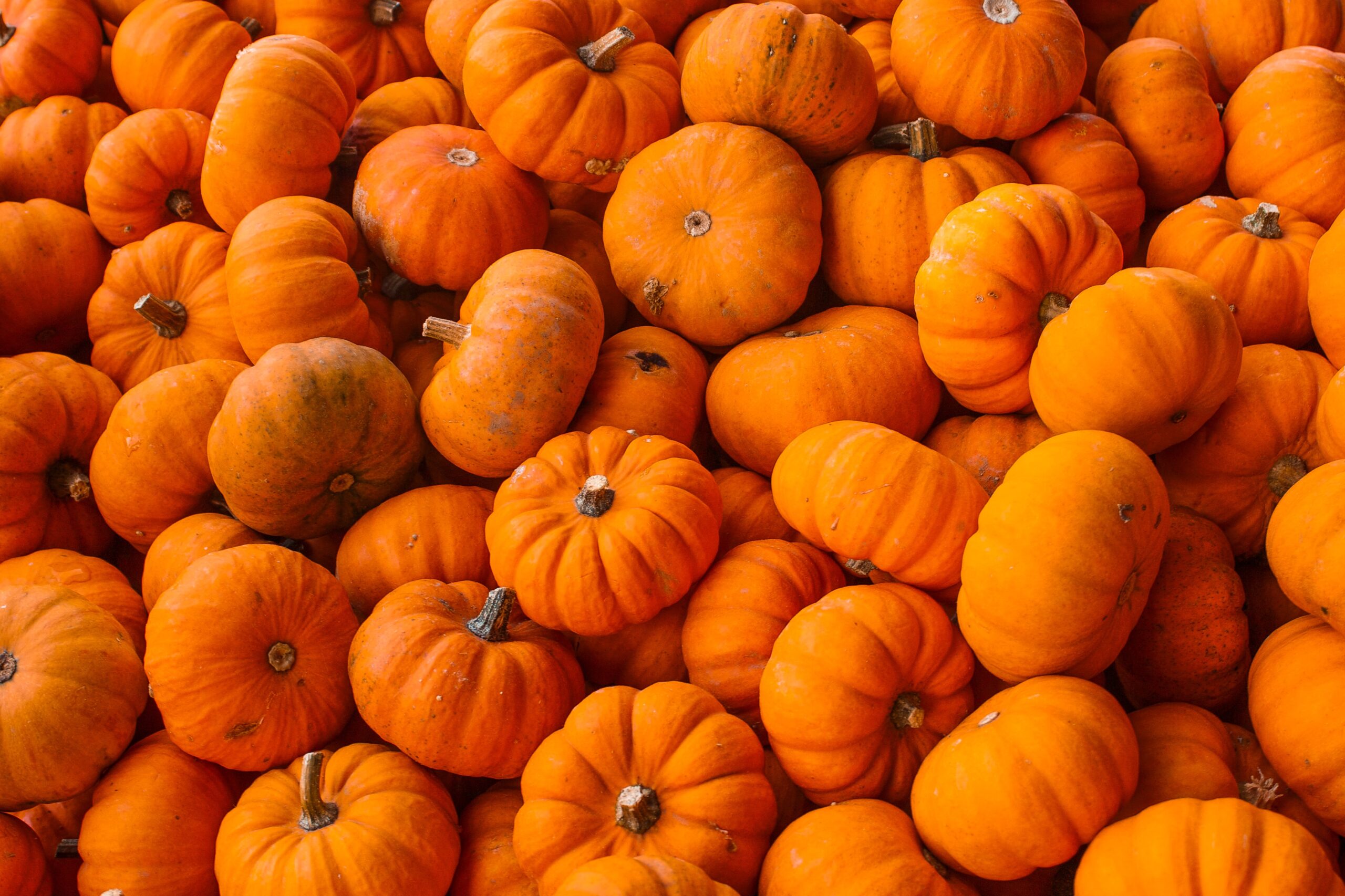
Lifestyle Recommendations
Home environment:
-
Assess your home environment. Is there mould? If so take the necessary actions to mitigate mould and moisture.
- To learn more on this topic listen to Vital Veda Podcast #030 – “Mould: The Hidden Stealth Fungi You Need To Know About” with Dr. Jill Crista.
-
How is the ventilation in your home? Open your windows more.
Exercise:
-
Ensure you are nasal breathing, not mouth breathing. This way, you are getting oxygen to the lower lobes of the lungs and not stressing out the chest. Learn more about the power and importance of nasal breathing HERE.
-
Swimming – Swimming is one of the exercises where you can mouth breath. Also beware that swimming in cold water or chlorine will aggravate asthma.
Pranayama:
Pranayama is a yogic body of knowledge of breath-work practices to “administer prana (life-force)” to the physiology.
This is very helpful for a variety of diseases, especially asthma.
There is a bunch of pranayama practices that can be practiced. One of my favourite pranayama practices for a variety of applications is Nadi Shodana, AKA Alternative Nostril Breathing or Anulomana Viloma.
- Administer Nasika before your pranayama practice for a greater effect.
Nasya:
Nasya is the daily practice of sniffing medicated oil up the nose.
This is included in the Ayurvedic daily routine as a regular practice to lubricate and strengthen the brain and respiratory system.
Sniffing Nasika regularly up prevents asthma and respiratory challenges from escalating.
It can be used to help treat asthma, dyspnoea and other respiratory conditions.

For those with chronic or severe asthma or dyspnoea, start with Nasika oil and once you get the hang of this practice, switch to Special Nasika Oil as this works more on the lungs.
Chest Treatment:
You can massage a pungent medicated oil like MGP Oil into the chest, followed by a heat pack or hot water bottle.
Herbal Remedies Helpful for Asthma
Swasananda Leham:
Improves “rasa and prana” health. Rasa is the plasma, dhatu or tissue, that comes before blood; and prana means “life force” which comes from proper oxygenation.
It is particularly effective for helping coughs and congestion problems.
Prandhara:
Literally meaning “flow of life,” Prandhara helps take care of some of very common problems like headaches, cold-like symptoms, asthma, nasal congestion + much more.
A full steam inhalation with Prandhara can be used during acute respiratory difficulty, at a time when one would usually use a puffer or inhaler. This is not a substitute, and you need to examine your self with the guidance of a quality health practitioner.
For those suffering asthma or respiratory difficulty can regularly inhale + sip prandhara in hot water throughout the day.
Swasakasantak Yog:
– great for kids + prevent allergies and respiratory difficulties.
Swasakasantak Yog helps support the upper respiratory system and very helpful in nasal congestion, coryza, excess mucous, blocked nose, hay fevers, asthma etc.
Dasmoola Katu Trayadi Kashayam:
A very well known classical Ayurvedic medicine in liquid form. It is widely used in the treatment of respiratory conditions. Particularly good for upper respiratory tract infections. Specifically works on the lungs rather than the upper respiratory system.
Anand Sid Yog:
Anand Sid Yog (Nutritious Immune Boosting Bliss) promotes bala (vital strength), that helps the body fight back disease. It is useful to boost immunity. It enhances overall vitality and helps prevent disease.
It is a powerful anti-oxidant formula that helps strengthen the lungs and helps in cough.
Shodana Vati:
Shodana Vati is one of the best Ayurvedic elixirs to help scavenge free-radicals, purify toxins out of the body and regulate the metabolism and digestion.
It thus has the potential to play a significant role in gradually eradicating asthma.
Even keeping a shodana vati tablet in the mouth and letting it dissolve can be used as a remedy during respiratory difficulty.
Nasika / Special Nasika:
As stated above.
Food Recipes
Eggplant soup (vārtāka):
Prepared with ginger, long pepper (pippalī), black pepper and ghee. (5)
Medicated Rice or Barley Gruel (Yavāgu):
-
Boil old rice with hing, rock salt, cumin seeds. You can also use old barley or old wheat.
-
Boil with 8x water to the amount of grains, and reduce to half.
-
If you have these therapeutic herbs you can add these while boiling for stronger medicinal effect – pauskara (inula racemose), ativisā (aconitum heterophyllum), citraka and karkata-śrngī (pistacia integerrima / zebrawood). (6)
Rice or Barley Gruel (Yavāgu) with Dasmula:
Dasmula is a classical Ayurvedic preparation meaning “10 roots.”
Cooking rice gruel with the decoction of dasmula is useful in bronchitis, hrdaya roga (heart disease), pain in the sides of the chest, hikkā and śvāsa.
-
Boil with 8x water to the amount of grains, and reduce to half. (6)
Panchakarma (Purification Therapy)
Pachakarma is Ayurveda’s premier detox and rejuvenation therapy.
Firstly fomentation therapy is administered to loosen up the toxic blockages (ama).
As snow melts over the creepers in the mountain range, on account of hot rays of the sun, so does the stable kapha in the body gets dissolved on account of the heat generated by these fomentation therapies. (4)
Then certain purification procedures are to be administered to eliminate the doshas out of the body.
These Panchakarma procedures are not for everyone, and have to be done under expert Vaidya guidance.
“If the flowing water of a river gets obstructed on its way, then the level of water rises further.
Similarly, if the channels carrying mobile vāyu (in the chest) get obstructed, then the vāyu located at the point of obstruction gets very much aggravated.
Therefore, the srotas (channels) of vāyu should always be cleansed [by panchakarma].” (7)
Book a Consultation with Dylan
Engage with Dylan to address your specific state of health and condition. You will be provided with a health plan designed for you to be self-sufficient in balancing your health.
- Click HERE to book your consultation.
RESOURCES
- Caraka Samhita, Chikitsa Sthana, Ch 17, (10-16)
- Caraka Samhita, Chikitsa Sthana, Ch 17, (17-18 1/2)
- Caraka Samhita, Chikitsa Sthana, Ch 17, (18 ½-20)
- Caraka Samhita, Chikitsa Sthana, Ch 17, (70 – 76)
- Caraka Samhita, Chikitsa Sthana, Ch 17, (94 – 100 1/2)
- Caraka Samhita, Chikitsa Sthana, Ch 17, (100 1/2 – 104)
- Caraka Samhita, Chikitsa Sthana, Ch 17 (121-122)


